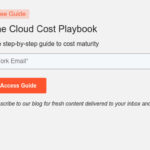For fans of Final Fantasy XIV (FF14), encountering server issues can be incredibly frustrating, especially when you’re eager to jump into Eorzea. Many players rely on official and third-party websites like the Final Fantasy XIV Lodestone World Status page and Arrstatus to check if the servers are up and running. These tools are invaluable for quickly assessing the general Ff14 Server Status. They provide a seemingly straightforward answer to the question: “Are the servers online?”.
However, recent player experiences and discussions across platforms like Reddit and the official forums highlight a critical gap in how FF14 server status is currently monitored and reported. Players are encountering various error codes and disconnections – sometimes even the dreaded error 2002 – while these status websites confidently declare “All Worlds Online.” This discrepancy points to a more nuanced problem beyond simple server downtime.
The issue lies in the difference between general server availability and individual player connectivity. Websites like Lodestone and Arrstatus primarily monitor the connection between their servers and the FF14 data centers. Think of it as checking if the data center’s front door is open. While this is a useful indicator, it doesn’t account for the complex network path between each player and the game servers.
To illustrate, consider the network connections involved. When you check FF14 server status on a website, it’s a server-to-server (let’s call it A to B) connection being tested. These status sites (Server B) connect to the FF14 data center servers (Server C) to gather information. This B to C connection is what informs the status you see. However, your actual game client connection is a direct player-to-server (A to C) pathway.
This means that while the server (C) might be perfectly accessible from the status website’s server (B), there could be issues along your specific connection path (A to C) that aren’t being detected. These issues could range from problems with your Internet Service Provider (ISP), to network congestion, or even specific port or P2P connection problems that the broader server status checks simply miss.
Therefore, relying solely on the standard FF14 server status indicators might not be enough. These tools are excellent for detecting widespread outages, but they fall short when it comes to diagnosing more localized or nuanced connection problems that individual players face. What’s needed is a more direct way to assess the player-to-server connection, something that goes beyond the current server-to-server checks.
One potential solution, drawing from database management best practices, could be the implementation of an API (Application Programming Interface). An API would allow for more direct, yet controlled, requests to the FF14 data centers for server status updates. This could offer a more granular view of server health and potentially provide insights into those player-specific connection issues that are currently going unreported.
This leads to some key questions for understanding the true FF14 server status and improving player experience:
- Data Center Architecture: What is the actual data map of the FF14 data centers like Aether or Primal? Understanding the network architecture could reveal potential bottlenecks or points of failure.
- FFXIV API Availability: Is there a player-accessible API that could be used to make out-of-game requests to the FF14 data centers for server status information?
- Manual Server Status Requests: Could a system be implemented to allow players to manually request a server status update from a specific data center, perhaps at intervals of every 6-24 hours?
Addressing these questions and exploring solutions like API integration could significantly enhance the accuracy and usefulness of FF14 server status information, ultimately leading to a smoother and more enjoyable gaming experience for everyone.

